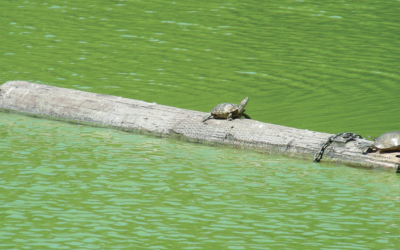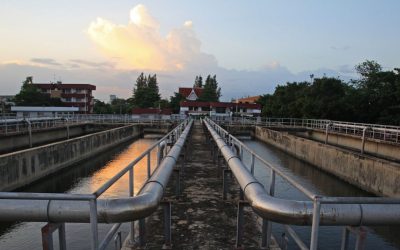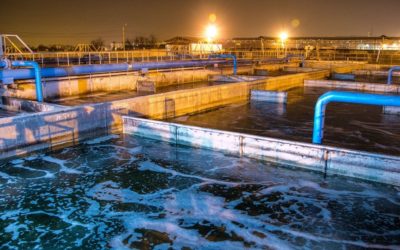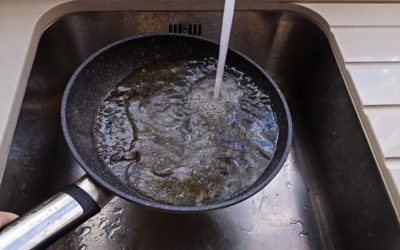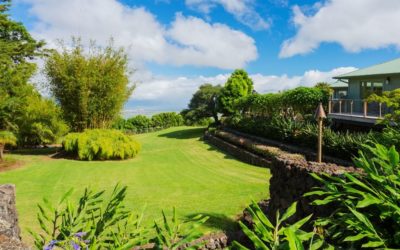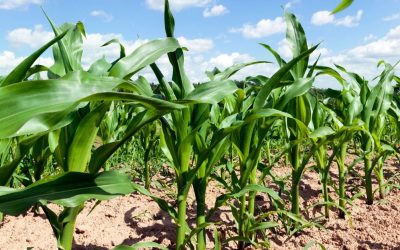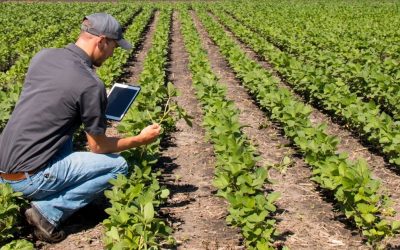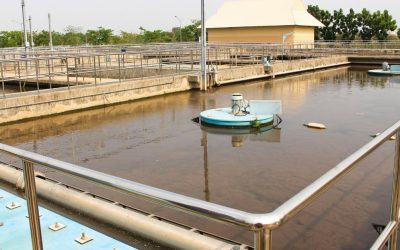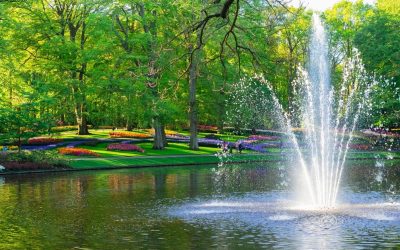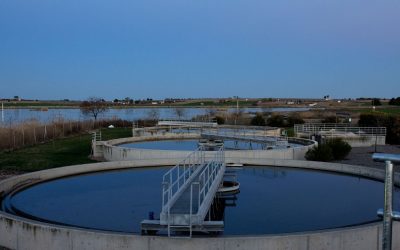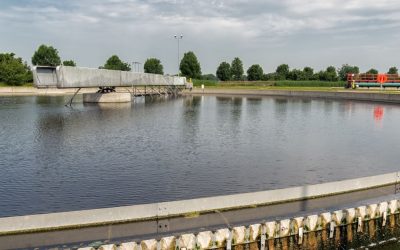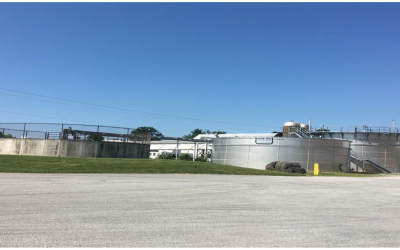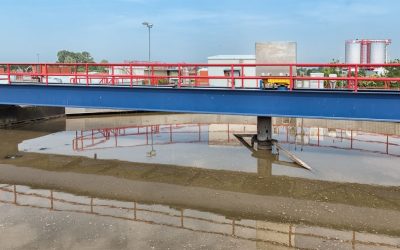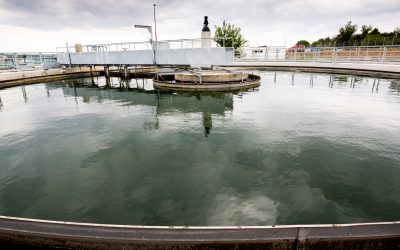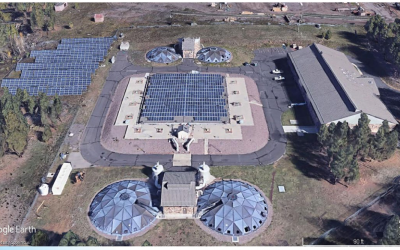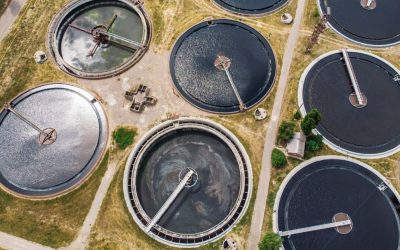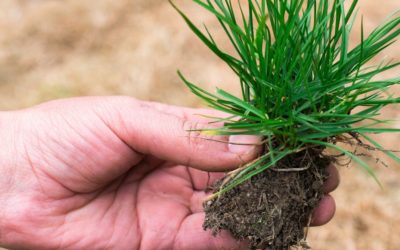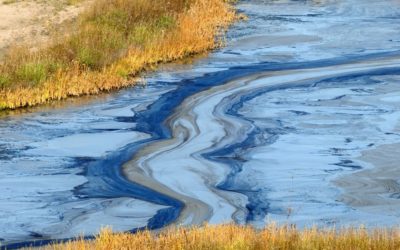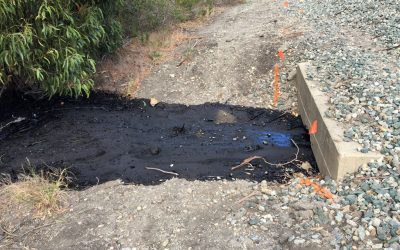The BioLynceus® Blog
Webinar – Lot 125 for Drought Concerns, Fertilizer Efficiency and Healthier Plants
https://www.youtube.com/embed/oucihu0Z6_0 Webinar on Lot 125 by lead agronomist, Scott Anderson.
Wastewater Reuse, The Impact on the Environment
The Good and The Not So Good! In the world as we know it today, and with all the conversations around climate change, there is one thing that is certain. Water is the most critical natural resources on this planet. Whether you believe in climate change or...
Emerging Trends
Another Observation From a Road Warrior! In the world of water and wastewater, emerging trends are beginning to influence the entire industry. In my travels around the country, I am discovering that issues in Arizona are also occurring in Washington, and issues in...
Lot 125 – Higher Yields, Less Water, Less Fertilizer
https://youtu.be/293VJ3Yi-6U Lot 125 has been helping farmers like you for over 25 years. A proven track record of higher yields while using less water and fertilizer. Make your crops drought resistant next season while minimizing extreme fertilizer cost. OMRI...
How to Improve Your Lagoon with Bioaugmentation
https://www.youtube.com/watch?v=0r91B25-vBI Kathleen Kelly shares 4 ways to improve your lagoon using bio augmentation. Perfect for industrial or municipal lagoons of any size and flow rate.
22 Reasons to Treat Your Wastewater with BioLynceus Biological Solutions
Saves you time and money.Faster waste digestion.Substantially reduces clean out frequency.No longer allows heavy crusting.Easy to use & no need for special equipment.Reduces wear and tear on machinery.Waste treatment system operates better and becomes biologically...
Top 20 Reasons to Treat Your Golf Course with BioLynceus Biological Solutions
Saves time and money.Increased soil fertility.Increased biological activity in soil with simultaneous increase in release of nutrients already present but previously locked away in inorganic chemical compounds or crop residue. Decreased compaction from equipment...
Webinar – Plant Startup with Tanner Hartsock
https://www.youtube.com/watch?v=sxpnrWdEUrw Tanner Hartsock M.S. takes us through the process of starting a wastewater plant and considers different options operators have in solving their challenges. What we didn’t expect was to get such a glowing endorsement from a...
Water Clarity Treatment in Irrigation Ponds
Water Clarity 5.5 Acres A country club in Montana was having issues with water clarity in their irrigation ponds. The two ponds had a total surface area of 5.5 acres. The water bodies were filled with treated wastewater. Additionally, the ponds received runoff from...
Bioaugmentation Improves Water Clarity in Freshwater Pond
Freshwater Pond 1.5 acres, 6-8 ft depth Algal and aquatic weed growth is a persistent issue impairing water clarity in freshwater ponds. Warm water temperatures and nutrient loads promote algal and plant growth in these systems, especially when organic matter content...
Water Clarity Bioaugmentation in a Freshwater Pond
Freshwater Pond, 2 Acres The water clarity of freshwater ponds can be impaired by organic material which accumulates in response to high nutrient loadings. Eutrophic surface water conditions, enriched with high nutrient concentrations, can promote excessive algal...
Water Clarity Treatment in a Freshwater Lake
Freshwater Pond, 3 Acres, 20 Feet Deep Achieving good water clarity in freshwater ponds can be challenging, especially during spring and summer months. Algal growth is a common issue that increases suspended solids in open water bodies. Excess algal biomass can...
Improving Water Quality in Freshwater Lakes
Maintaining good water clarity is essential when managing drinking and recreational water resources. Freshwater pond systems have constant organic inputs from vegetation, biosolids, and runoff. In the spring and fall, changing water temperatures and densities can...
Webinar – Lot125® for Drought Protection
https://youtu.be/TtcPCBST_Kw In this short 7-minute video, our Lead Agronomist, Scott Anderson talks about the science behind Lot125's ability to protect plants in times of extreme weather.
Webinar – Lot125® for Phosphate Efficiency
https://youtu.be/zsngPjCfHqA The volatile market for phosphate can send prices soaring. In times like these, it is important for farmers to make the best use of phosphate that they can. In this short 10-minute video, our Lead Agronomist, Scott Anderson explains how...
Webinar – How to Improve Nutrient Uptake and Yield with Fulvex®
https://youtu.be/VEdwxlMPU14 In order to thrive, plants needs a strong start and steady nutrients throughout their lives. Fulvex provides both to ensure that your crops provide the yield that you deserve. In this short 10-minute presentation, Scott explains how to...
BioLynceus Lot 125 Case Study
The study was conducted in 2012 and is available at the Irrigation Research Foundation www.irf-info.com.
Where Have All the Snowbirds Gone?
Another Road Warrior Observation F:M Issues In my travels this year, as limited as they have been (yes, I am suffering from severe hotel withdrawal), I have observed a recurring issue hampering the optimum efficiency of wastewater operations. This issue is the lack of...
Denitrification with Candy Carbon®
biological denitrification technology “The biological denitrification technology is based on the conventional theory that carbon is the limiting factor in the efficiency of biological denitrification. Heterotrophs utilize carbon from organic compounds like sugars,...
Nitrification in Cold Weather
One thing that is definite is understanding of when water temperatures get cold your bugs may not be so happy. One thing that has continued to show up year after year for the last 25 years in the environmental business, especially the wastewater industry, is the idea...
Public Education FOG
https://youtu.be/IRMsv0xzfQY Rick Allen discusses methods for educating the public on fats, oils and grease. This is a short webinar that lasts about 18 minutes.
Biological Turf and Shrub Treatment Improves City Hall Landscaping Project
Turf and Landscaping 2 Acres A growing city in the Colorado Front Range used BioLynceus® products to improve root zone development, water retention, and nutrient uptake of newly planted turf and shrubs in front of the City Hall. Initially, a resident was using...
Biological Nutrient Removal
Biological nutrient removal (BNR) is a process used for nitrogen and phosphorus removal from wastewater before it is discharged. BNR Challenges Conventional biological processes typically do not remove total nitrogen (TN) and total phosphorus (TP) to meet the...
Why All Humic Acids Are Not Created Equal
As the use of humic acids become more prevalent in agricultural, turf, environmental, home & garden and other applications, the prospective customer may well ask the question, "What is the difference in humic acid products?" Since Global Organics is large provider...
Bio-Dredging Solids in a Lagoon System
Lagoon System 0.01 MGD Municipalities using lagoon systems for wastewater treatment are often challenged with accumulating solids in their treatment ponds. Municipal wastewater carries high organic substrate loads that can inhibit proper wastewater processing....
Wastewater System Restart or Initial Start Up?
In the world of wastewater these days there are many challenges that will occur. Some you may have already seen and some may appear in the near future. One of these many challenges is how to get your plant activated if it is killed off by known or...
Flushable or Not – What is Legal?
I recently received this email from a municipality looking for help regarding a new (small) lift station: “Our new lift station is being clogged with wipes almost daily, requiring several hours a day sometimes. That is very difficult when I am the only employee. Do...
Wastewater Reuse and its Impact on the Environment
In the world as we know it today, and with all the conversations around climate change, there is one thing that is certain: water is the most critical natural resource on this planet. Whether you believe in climate change or not, it is imperative that all of us...
Soil Biology
Life in the Soil and Landscape An incredible diversity of organisms make up the soil food web. These organisms range in size from the tiniest one-celled bacteria, algae, fungi, and protozoa, to the most complex nematodes and microarthopods, to the visible earthworms,...
Biooxidation of Wastewater
Operators of animal, industrial and municipal wastewater systems have often been surprised with the increase of dissolved oxygen in wastewater where BioLynceus products have been applied with reported odor and sludge reduction. In noting the increase in biological...
Soil Bioremediation
Throughout history man has expected nature to dispose of whatever material he has buried in the soil. Without the great digestive capacity of soil we would be up to our ears in organic matter. The natural digestive process converts organic matter to reusable and...
Soil Microbes and Nutrient Uptake
Improvement in crop growth obtained from crop and soil management practices is the result of increased activity of microbes in the vicinity of plant roots (the rhizosphere). There is still much unknown in the relationship of roots and microbes because of the...
Webinar – Solids Reduction
https://youtu.be/nSJOsLItUFU Resident expert, Tanner Hartsock, discusses how ProBiotic Dredging® can help with solids reduction. This is a short video that lasts 8 minutes.
Water Clarity Treatment In Irrigation Ponds
A country club in Montana was having issues with water clarity in their irrigation ponds. The two ponds had a total surface area of 5.5 acres. The water bodies were filledwith treated wastewater. Additionally, the ponds received runoff from the fertilized golf course....
Soil, Microbes and Water Management
The following research article, developed by BioFlora's team at the Integrated Life Science Research Center, describes how soil structure and stability are critical factors for agricultural water management. Please share it with your PCA or call your BioLynceus®...
Webinar – FOG
https://youtu.be/JIXuQEnfiZg Resident expert, Tanner Hartsock, shares how fats, oils and grease (FOG) can impact your wastewater treatment system. This is a short video that lasts 8 minutes.
Effluent Water and Lake Cleanup
The definition of effluent is “something that flows out.” We can then say that any flowing water is effluent, whether it comes from a wastewater treatment plant or flows from land, taking with it fertilizer nutrients, herbicides, insecticides, or any other chemical,...
4 Ways to Balance Food to Microorganism Ratio (F:M) in Wastewater Treatment
Introduction Wastewater treatment requires a constant balance between the organic carbon coming into the plant and the quantity of microbiology available to consume the influent material. This relationship is known as the food to microorganism ratio (F:M).The “M”...
Regulate Filamentous Bacteria in Wastewater Treatment
Filamentous Bacteria Treatment Managing filamentous bacteria (FB) in wastewater treatment systems is a balancing act. Having excessive filament forming organisms can cause foaming and treatment issues. Having too little FB prevents proper solids settling which is...
Webinar – The Soil Food Web
https://youtu.be/wZOSwgMQKmE Resident expert, Mark Sembach, discusses how BioLynceus® provides organic, sustainable programs to help build the soil food web.
BioLynceus® Hemp Program
Strains of cannabis that lack THC are grown to produce products from food, to textiles and building materials. This regulated material is becoming an option for American farmers with state regulations opening up the previous restrictions on growing strains of...
Solids Reduction in a Municipal Lagoon System
One of the most persistent challenges in lagoon wastewater treatment is solids (sludge) management. Lagoon systems are designed to reduce organic solids during wastewaterprocessing. Built up sludge is typically dredged from lagoon systems with heavy equipment. Once...
5 Ways to Reduce Wastewater Solids
Solids are an inevitable challenge in wastewater treatment. Even the world’s most efficient treatment systems must waste and dispose of some byproducts. The types of solids covered in this article are: trash (solid waste), organic solids, and inorganic solids (grit)....
BioLynceus® Turf Products FAQs
Do BioLynceus® products replace commercial fertilizer or can fertilizer usage be decreased?BioLynceus® p roducts promote increased efficiency of commercial fertilizers. We recommend that greens keepers or turf managers continue a balanced fertilizer program until the...
Revegetating Mine Waste Using Bioaugmentation
Revegetation is a powerful tool used to retain mine drainage and stabilize waste rock piles after mining activities. However, promoting plant growth on mine waste rock pilescan be challenging. These environments typically have limited topsoil development and steep...
7 Ways to Reduce FOG in POTW
Excess fats, oils, and grease (FOG) discharged into collection systems can cause issues for Publicly Owned Treatment Works (POTW). First, fatty organic material can accumulate in sewer lines inhibiting wastewater flows. Obstructed pipes can cause Sanitary Sewer...
High Stakes: Marijuana and Wastewater
Why your municipality should complete a pretreatment survey During my research for my new class “The Changing World of Pretreatment,” I ran across many new and inventive ways to use THC and CBD products. In Denver, Ganja Yoga encourages the two relaxation methods in...
City Park Turf Bioaugmentation
Turf and Landscaping 11.5 Acres The Parks Department in a Wyoming municipality conducted a study on 11.5 acres of city park turf to determine the effects of biologically enhanced soil amendments on plant and soil health. BioLynceus® Lot 125® and Seaweed Cream® were...
7 Ways FOG are Introduced into Publicly Owned Treatment Works
Publicly owned treatment works (POTW) often struggle to limit fats, oils, and grease (FOG) intake in their wastewater systems. Excess FOG buildups can prevent wastewater flows causing blockages in collection lines. Additionally, heavy FOG discharge can disrupt...
What Can Microbes Do For You? Part II
The Power of Lagoon Systems It is common knowledge that bacteria thrive in some environments better than others. Bacteria can only consume or degrade compounds they touch or attach to. One of the best systems to increase contact/retention time is a lagoon...
Golf Course Turf Bioaugmentation
Turf and Landscaping 150 Acres A golf course in the Colorado Front Range was having trouble growing healthy turf. The site was previously used for agriculture and sod production. Because of this, the golf course had variable soil conditions with little to no topsoil...
Webinar – Food to Microbe Ratio (F:M)
https://youtu.be/kbMyTcFLz_4 Resident expert, Tanner Hartsock, shares how food to microbe ratio (F:M) can impact your wastewater treatment system and how to maintain an optimal F:M ratio. This is a short video that lasts 10 minutes.
What Can Microbes Do for You? Part I
Speeding-up Mother Nature Over the last 20 plus years of being in the environmental arena, I have been asked this question hundreds of times: what can microbes do for me? My best response to this question is, “what do you want them to do for you?”As I had once heard...
Pond Clarity Testimonial
I used ProBiotic Scrubber® I (PBI) in several of Caras Nursery's clients landscaping ponds to control algae blooms. I was impressed by how efficiently the product eliminated and controlled the algae blooms and odors.Furthermore, there was an increase in the clarity of...
Freshwater Remediation Testimonial
Beginning in 1999, Big Elk Meadows contracted with BioLynceus® for the purpose of improving the water quality of our lakes, which are the source of our drinking water. During 1999, we began treating our lakes which were in an unhealthy state with BioLynceus® ProBiotic...
Corn Testimonial
Darwin Jeffers of Phillips County, CO used BioLynceus® Lot 125® on his 2010 Conservation Reserve Program breakout planted to dryland corn, and on his dryland wheat crop, in 2011. The corn made $311 profit over expenses at 82 volume per acre. The wheat made 52 volume...
Soil Remediation Testimonial
Many years have passed since I became the Golf Course Superintendent at Buffalo Run Golf Course in Commerce City, Colorado. Back in 2000, I used to half-joke that our course was more of a dirt bike course than a golf course! That is certainly not the case today. Since...
Freshwater Lake Testimonial
We put ProBiotic Scrubber® I in the lakes on hole number six. The smell increased initially, then dissipated. Also, there does appear to be a lot more microbial activity based on the amount of bubbles generated when we turn over some of the underlying soil. We would...
Turf Farm Testimonial
We at Green Acres Turf Farm have been using BioLynceus® products for over 4 years. In our program of utilizing these products we have reduced our use of granular commercial fertilizers substantially while actually increasing the quality of our turf product. The...
Turf Farm Testimonial
This is to inform you of the positive results that Humega® has on the turf farm. I would recommend this product to be used on other turf farms, parks, golf courses, and recreation fields. The following are results we had when using Humega®: Noticed increase soil...
Organic Farm Testimonial
Western Colorado Organic Orchards, Inc. is a certified organic farm with 29 acres of fruit and vegetable production. Over the last four years I have been very pleased to work with BioLynceus® and use several of Global Organics' products including: Seaweed Cream®, Lot...
Golf Course Turf Testimonial
Several years ago we began using Lot 125® as a part of our overall agronomic program. This product was incorporated into all of our spray tank applications. Lot 125® appeared to help with overall turf vigor and soil improvements from humic and fulvic acids in the...
Homeowner Lawn Testimonial
Not only do I have the "greenest lawn on the block", I've done it during the height of summer period while adhering strictly to the most stringent water restrictions ever imposed by the city of Aurora. Thanks for introducing me to the Humega® and TurfMaster® products....
Golf Course Turf Testimonial
I have been using Humega® for more than 4 years. Some of the positive results are increased turf quality and vigor, better utilization of fertilizer (it seems to last longer), quicker germination and quicker maturation of seedlings and fewer hot spots. The most...
Landscape and Lawn Testimonial
I began using BioLynceus® Humega® on some of my clients' lawns and landscaping. I have been extremely impressed with the results! First, I noticed there was no transplant shock when I treated the root ball with Humega® prior to plant installation. Second, I did not...
Turf Farm Testimonial
I am writing this to let you know of a positive experience we recently had with our turf grass that was grown with your soil amendment Lot 125®. We were recently asked to provide turf grass for a client that requested we provide large rolls of sod without using...
Recreation Field Testimonial
St. Vrain Valley School District has been using two BioLynceus® products, Humega® and TurfMaster®, on our Niwot High School Athletic Park site. These are very high usage fields (softball, soccer and baseball). I asked Rick Allen to come to the site and take core...
Golf Course Testimonial
I have been on an organic BioFlora products regimen for six years, and I am very happy with the results. I have tried a number of solutions with liquid fertilizer and finally settled on this combination of 5 gallon Humega®, 5 gallon Fulvex®, 5 gallon TurfMaster®, and...
Blowout of Hydrocarbon and Brine
In 2012, the United States Forest Service began utilizing BioLynceus® treatment protocols for a parcel of land that was affected by a well blowout containing hydrocarbon, brine and heavy metals. In addition to the area directly adjacent to the well, wind carried these...
Treatment Solutions for Fats, Oils and Grease
Microbial Grease Remediation Our biological products are 100% natural and earth friendly. When introduced into the collection systems the microbes stimulate indigenous microbial, enhancing the biological process and accomplishing in days and months what would normally...
Candy Carbon® External Organic Carbon
Product Description Candy Carbon® (CC) is an external organic carbon (EOC) product used by wastewater facilities to enhance biological processes and increase organic carbon when and where needed. This product may promote a diverse bacterial population for enhanced...
Webinar – BioFlora Seaweed Cream®
https://youtu.be/-1SlLMNsx3w Resident expert, Scott Anderson, shares how BioFlora Seaweed Cream® boosts root development early in the spring as well as assists fruit set and increases protein and feed value. This is a short video that lasts less than 7...
Webinar – BioFlora Fulvex®
https://youtu.be/0Bl6TQY_G8w Resident expert, Scott Anderson, shares how Fulvex® gets plants off to a quicker start and effectively force feeds nutrients into the plants. This is a short video that lasts less than 5 minutes.
Webinar – Lot 125®
https://youtu.be/RGjDgVp9enc Resident expert, Scott Anderson, shares how Lot 125® works with the soil food web for healthy soils and crops. This is a short video that lasts less than 5 minutes.
Healthy Soils Produce Healthy Plants
As an environmental consultant for the last 26 years, I have learned many things about our soils and water. One of the many has been the necessity of creating living ecosystems within our soil structures and waterways. Whether you are growing grass in your yard or for...
Crystal Meth and Your System
Information you should know about what crystal meth (CM) will do in your system and how to recognize the signs you may have it in your wastewater process. We are starting to see more and more issues with CM chemicals showing up in rural wastewater systems. This is...
BioLynceus® Products in Agricultural Soils FAQs
Do BioLynceus® products replace commercial fertilizer usage or can fertilizer be decreased?Our products promote increased efficiency of the use of commercial fertilizers. We recommend that the grower continue a balanced fertilizer program until the biological food web...
Whence Comest Your Humic Acids?
Numerous articles within the past five years have given the particulars of the whys and wherefores of organic acids. The dilemma when purchasing humic acid (HA) and fulvic acid (FA) products should revolve around both guaranteed percents and parent materials. There...
Tread Lightly On Our Little Friends In The Soil
Each bit of land is a community unto itself, with a unique combination of organics, minerals, and organisms. Prairies and grasslands tend to be dominated by bacteria, and so do agricultural soils, although exceptionally productive agricultural land also houses a high...
How Lot 125® Can Help Plants Receive Needed Sulfur
Carbon-bonded S is mineralized through various pathways:1. Direct aerobic mineralization during the oxidation of C as an energy source2. Anaerobic mineralization of organic matter (desulfurization)3. Incomplete oxidation of organic S into inorganic S compounds4....
Mega-Millions of Microbes
Lot 125® provides the strength of organic humic acids and fulvic acids with robust soil and microbial communities. Constant attention to building organic soil microbial communities plays a major role in plant’s metabolic processes. The carbon base in Lot 125® is a...
Benefits of Using Lot 125® Blend
Soil CompactionLot 125® is a sequestering compound and as such, it is able to break the bond of sodium and magnesium with clay particles in heavy soils. Thus, it reduces the tightness and compaction of the soil, enabling it to be more easily tilled. The resultant open...
BOD₅ and TSS Pretreatment for an Aerated Lagoon System
Collection System 0.02 MGD Publicly owned treatment works (POTWs) receiving wastewater from industrial sources often experience treatment complications from high biological oxygen demand (BOD5) and total suspended solids (TSS) loads. Establishing an...
Water Clarity Bioaugmentation in a Freshwater Pond
Freshwater Pond 2 Acres The water clarity of freshwater ponds can be impaired by organic material which accumulates in response to high nutrient loadings. Eutrophic surface water conditions, enriched with high nutrient concentrations, can promote excessive algal...
Improving Water Clarity in Freshwater Lakes
Freshwater Lake 4-6 Acres Maintaining good water clarity is essential when managing drinking and recreational water resources. Freshwater pond systems have constant organic inputs from vegetation, biosolids, and runoff. In the spring and fall, changing water...
BOD & TSS Treatment in an Industrial Wastewater Facility
Industrial Food & Beverage Wastewater Treatment Plant 0.01 MGD Wastewater treatment plants processing industrial wastewater are often challenged with high biological oxygen demand (BOD) and total suspended solids (TSS)loadings. Specifically, wastewater byproducts...
Water Clarity Treatment in Freshwater Lake
Freshwater Pond 3 Acres 20 Feet Depth Achieving good water clarity in freshwater ponds can be challenging, especially during spring and summer months. Algal growth is a common issue that increases suspended solids in open water bodies. Excess algal biomass can be...
Bioaugmentation Improves Water Clarity in Freshwater Pond
Freshwater Pond 1.5 Acres 6-8 Feet Depth Algal and aquatic weed growth is a persistent issue impairing water clarity in freshwater ponds. Warm water temperatures and nutrient loads promote algal and plant growth in these systems, especially when organic matter content...
FOG Reduction in Collection System
Collection System 0.8 MGD A growing Wyoming municipality of 10,000 people was having trouble with fats, oils, and grease (FOG) management in their wastewater collection system. The city’s lift stations and main lines were consistently coated with grease. When the lift...
FOG Treatment in a Wastewater Collection System
Collection System 0.7 MGD Persistent fats, oils, and grease (FOG) accumulation can deteriorate wastewater collection infrastructures and increase maintenance demands. Lift stations have many moving parts that can breakdown when FOG buildups are too great....
Startup Industrial Membrane Bioreactor Wastewater Plant
Industrial Membrane Bioreactor Plant 0.01 MGD When starting up a wastewater plant, the biological seed used can influence future treatment efficiency and operational challenges. Domestic activated sludge seeding has potential to introduced unwanted biological and...
Solids Reduction in a Groundwater Recharge Storage Basin
Groundwater Recharge Basin 0.03 MGD Wastewater storage basins receiving discharge from municipal treatment plants can accumulate solids. With bioaugmentation, utilities can increase the biomass in wastewater systems to more effectively reduce solids.1 The following...
Solids and FOG Reduction in a Mechanical Wastewater Plant and Collection System
Mechanical Plant Collection System 0.3 MGD Fats, oils, and grease (FOG) build-up in wastewater collection lines is a persistent issue that has plagued many municipalities. Challenges arise when FOG and solids cause blockages in the transport pipes carrying influent...
Sludge Reduction in a Large Evaporative Lagoon
Evaporative Lagoon 0.9 MGD Sludge accumulation is common in municipal lagoon systems. These processes are often overloaded with poorly degraded solids in influent wastewater flows. Toimprove solids reduction and overall treatment quality in the above lagoon systems,...
Solids Treatment in a Wastewater Lagoon System
Wastewater Lagoon System 0.2 MGD Municipal wastewater lagoon systems are often challenged with solids accumulation due to high organic loadings. Excess sludge can severely inhibit the treatment process in these systems. Furthermore, to avoid the high cost and labor...
Sludge Reduction in a Lagoon System with ProBiotic Scrubber® II
Wastewater Lagoon System 0.8 MGD Excessive sludge accumulation and related treatment issues are often experienced in rural wastewater lagoon systems. A growing Wyoming city of 10,000 people were struggling with solids buildup in their lagoons. The biology in their two...
Solids and Hydrocarbon Reduction in Oil Refinery Aerobic Biological Treatment Units
Industrial Aerobic Biological Treatment Units 2 MGD An industrial oil refinery in New Mexico relied heavily on three aerobic biological treatment units (ABTUs) to process their high strength wastewater. The refinery processed 45,000 barrels of crude oil a day. Issues...
Webinar – Solving Nitrification Issues Amid Covid-19
Resident expert, Tanner Hartsock, shares 3 methods that wastewater operators are using to solve nitrification issues during the Covid-19 crisis.
Toxicity Treatment in an Oil Refinery Aerated Lagoon System
An industrial oil refinery in New Mexico used BioLynceus® to restart their biological treatment after a toxic hit. The refinery was processing 50,000 barrels of crude oil a day. Toxicity was experienced in the system after foaming fire retardant was unexpectedly released at the refinery.
Toxicity Treatment in a Facultative Lagoon System
Lagoon WWTP 0.2 MGD The biology in wastewater lagoons can be significantly impacted by toxic substances introduced from illicit drug manufacturing. Surface waters contaminated with drugs, and the chemicals used to manufacture them, are known to suppress aquatic life,...
Toxic Hit Recovery at a Mechanical Wastewater Treatment Plant
Wastewater treatment utilities receiving inputs from industrial and anthropogenic sources are highly susceptible to toxic waste inputs. Toxic loads are often sporadic and can be extremely devastating to the biomass in treatment facilities.
Toxicity Treatment in a Municipal Wastewater Lagoon System
Chemicals used in illicit drug manufacturing can cause significant harm to the microbial communities in surface waters. Municipal lagoon systems are especially vulnerable to these chemicals, because they receive high strength influent directly from urban sources.
Toxicity Mitigation in an Industrial Sequencing Batch Reactor
Managing toxic loadings at industrial wastewater treatment facilities can be challenging. Influent from food processing industries can introduce harmful cleaning products. Biota with damaged cellular structures may be unable to properly metabolize the organic substrate and nutrients in wastewater.
Toxicity Treatment in a Wastewater Lagoon System
Municipal wastewater lagoon systems are susceptible to toxic waste poisoning. Toxic loads from residences and businesses are sporadic and difficult to mitigate. When toxicity levels are high in wastewater lagoons, the biological treatment process is inhibited due to loss in biomass.
Startup of a 8.9 MGD Anaerobic Digester at a Sugar Refinery
Halfway through a sugar beet processing campaign (September through May) a Midwest refinery noticed something was wrong with their wastewater processing system. The plant discharge was within limits for their NPDES permit parameters, but the chemical oxygen demand (COD) readings from their 8.9 million-gallon anaerobic digester were very different at the top, center, and bottom of the digester.
Startup of a Membrane Reactor
Mechanical WWTP .06 MGD National parks attract millions of visitors each year. Increasing seasonal traffic experienced by these establishments can overload the wastewater treatment infrastructure leading to treatment inefficiency and, eventually, structural...
Startup Mechanical Plant After Failed Activated Sludge Seeding
A common issue in activated sludge systems is sludge bulking (SB), or the uncontrolled growth of filamentous bacteria (FB). Impacts of a bulking sludge include (but are not limited to) poor settleability, impaired biological nutrient removal, and increased facility maintenance.
Startup of a Fixed-Film Activated Sludge Process
Establishing a functional biological community for wastewater treatment is essential when starting a new plant. Monitoring the growing biology during a startup provides the insight plant staff need to adjust operations to achieve a high treatment efficiency. Settleometer testing of aeration basin effluent in activated sludge processes can indicate whether the biomass will settle properly or cause bulking in the system.
F:M Stability in a National Park Wastewater Network
The F:M in the wastewater treatment network at a National Park in Wyoming was optimal from July – October. There was consistent organic carbon loading during this time from tourist activities. However, when the park closed for the winter, the biomass declined due to reduced influent flows. This caused treatment issues in the beginning of the next tourist season in May and June because biomass declined during the slow recreation months November-April.
F:M Stability in a Sequencing Batch Reactor
In many resort towns, the influent loads to the wastewater treatment system are highly variable throughout the year. During the tourist seasons there is an abundance of wastewater to sustain the biomass at treatment facilities, but when the transient population leaves, there is a drastic reduction in organic substrate. The organic carbon supplied to the system, the carbonaceous biological oxygen demand (CBOD), serves as a food source for organotrophic organisms in activated sludge systems.
F:M Stabilization at a Mechanical Wastewater Treatment Plant
Wastewater treatment plants receiving inconsistent influent loads are often challenged with maintaining an effective biological treatment. Many of the key microorganisms in wastewater processes are dependent on organic substrate to grow and divide. When influent flows are limited, the biodegradable carbon source for the treatment system may be too low to sustain biomass.
F:M Treatment with Candy Carbon® at an Activated Sludge Plant
Many wastewater systems experiencing high infiltration and inflow (I&I) have issues with hydraulic overloading which impacts biomass stability. I&I can impair the capacity of the wastewater collection system and wastewater treatment infrastructure.
F:M Treatment in an Activated Sludge Plant
Wastewater systems located in regions with high annual precipitation, such as the Pacific Northwest, are prone to experiencing biological washouts due to high infiltration and inflow (I&I) from collection systems. I&I can critically disrupt the biological treatment at a plant.
Candy Carbon® Denitrification in an Activated Sludge System
Activated Sludge Plant 0.2 MGD For many municipal wastewater treatment facilities, removing inorganic nitrogen to permitted discharge levels is a challenging requirement. Without the role of biological nutrient removal (BNR) in treatment systems, effluent wastewater...
Denitrification with Candy Carbon® at an Industrial Wastewater Treatment Plant
Industrial Wastewater Treatment Plant 0.7 MGD Denitrification efficiency in wastewater treatment is dependent on several environmental conditions. The wastewater plant must maintain a consistent anoxic zone, abundance of denitrifying microorganisms, and organic carbon...
Nitrification Bioaugmentation in an Activated Sludge Process
Mechanical WWTP .2 MGD Augmenting wastewater processes with cultures of nitrifying bacteria can increase abundance and nitrification efficiency correspondingly. Additionally, implementing organic matter degrading microbiology in a system can increase the time...
Nitrification Treatment in an Aerated Lagoon System
Lagoon WWTP 0.2MGD Municipal Lagoon systems are often challenged with facilitating nitrification. Nitrifying bacteria are responsible for removing ammonia from wastewater. These organisms are generally in low abundance in lagoon processes for a few reasons; [1]...
Nitrification with ProBiotic Scrubber® N in an Activated Sludge Plant
Mechanical WWTP .22 MGD An effective activated sludge system has the capacity to remove ammonia from influent wastewater via nitrification. Several factors impacting efficient ammonia and nitrite oxidation in wastewater treatment include, temperature, and abundance of...
Wastewater Nitrification Amid COVID-19
Are your effluent ammonia levels increasing? We are hearing reports of nitrification challenges and other issues from wastewater operators. [ Webinar ] 3 Ways to Solve Nitrification Amid Covid-19 A possible cause may be an increase in disinfectants and sanitizers...
Treating Anaerobic Soils
When the soil environment is contaminated it can create an area known as “black layer.” We see this often in turf grass, where the tendency is to over-water the top of the plant, making the soil unhealthy with an anaerobic area.
How to Develop Healthy Root Zones Through Good Soil Management
There is still much unknown in the relationship of roots and microbes because of the complexity of this symbiotic relationship.
Hydrocarbon Remediation for Plant Health
Many top soil scientists warn that soil fertility is far more complex than the practice of using the soil for a matrix to hold up the plant into which chemical nutrients are added to “spoon-feed” the plant while other chemicals are added to the soil and plant to kill harmful pests.
Revegetation and Plant Development In Disturbed Terrain
In disturbed or mined lands needing erosion control and reclamation/revegetation, conditions are often far from ideal for seed germination and plant growth. The chemical, physical and biological properties of disturbed soil and mine tailings are often limited in their...
Copper Tailing Revegetation
Disturbed soil environments are especially harsh for rebalancing the soil. In our applications we have successfully remediated mining tailings, road projects, and disturbed soils. We have brought deteriorated soils back to vital environments with soil enhancing...
How to Clean Soil Containing Toxic Petroleum Compounds
BioLynceus™ is committed to discover natural processes enhanced by organic-based products to reduce pollution and contamination effectively and economically.
Soil Conditioning – Improving the Soil Food Web
In disturbed soils needing hydrocarbon mitigation and reclamation/revegetation, conditions are often far from ideal for seed germination and plant growth. The chemical, physical and biological properties of disturbed soil are often limited in their ability to...
Nitrification of Municipal Lagoon Systems
Municipal Lagoon systems are often challenged with facilitating nitrification. Nitrifying bacteria are responsible for removing ammonia from wastewater. These organisms are generally in low abundance in lagoon processes for a few reasons; [1] nitrification is an...
Soil Conservation That Works
Soil Conservation is the name given to a handful of techniques aimed at preserving the soil. Soil loss and loss of soil fertility can be traced back to a number of causes including over-use, erosion, salinization and chemical contamination. Unsustainable subsistence...
ProBiotic Dredging Explained
ProBiotic Dredging® Explained ProBiotic Dredging® is a proprietary process utilized by BioLynceus® to remove organic materials from fresh water lakes, ponds, wastewater lagoons and waste handling systems. For over twenty five years, BioLynceus® has been working...
How Do Wastewater Plants Remove Solids From A Digester?
When the wwtp process experiences difficulty in breaking down the solids an alternative is to have the solids removed. This often includes a third party who is qualified to handle the cleaning and removal of solids out of the digester.
Solids Handling and BioSolids Management
Have you seen our trainer's lately? The management of wastewater treatment, specifically sewage wastewater sludge and the residual sludge is a operational and management concern for sewer and treatment professionals. We provide training to wastewater treatment...












